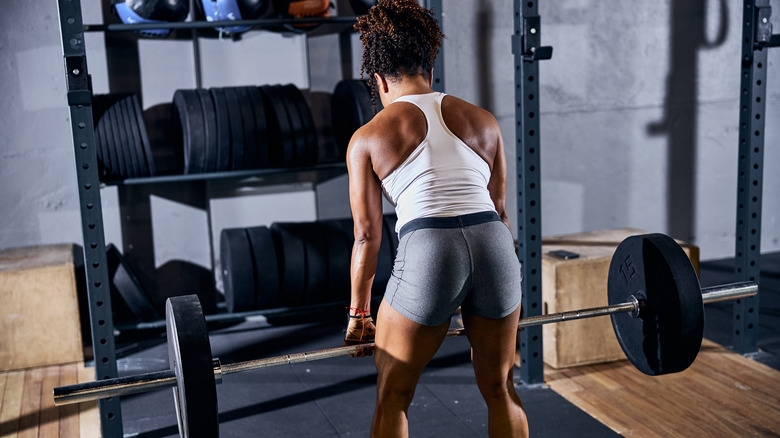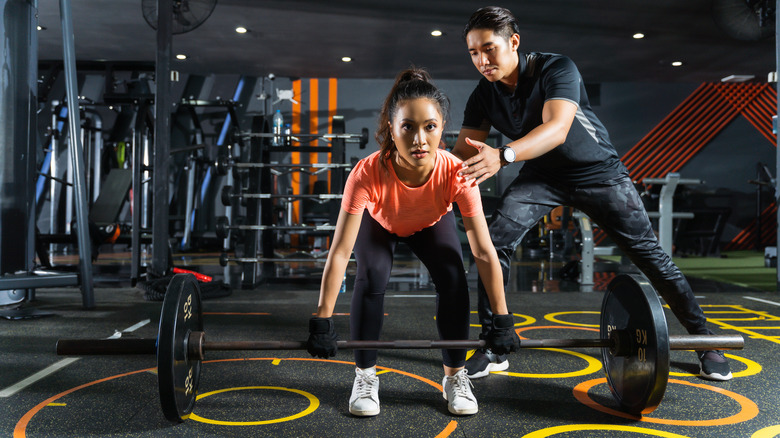Why Deadlifts Are Hurting Your Lower Back
Deadlifts sometimes have a bad rap. A "leg day" exercise regimen incorporates powerful movements such as squats, lunges, lifts — you name it — but deadlifts are the forgotten fat-burning exercise and for a concerning reason. Lower back pain is a major complaint associated with deadlifts, but this shouldn't stop you from completing the exercise. According to Harvard Health, deadlifts are one of the leg exercises that should always be included on leg days, due to their ability to increase balance and mobility.
Because deadlifting requires your full body, you may feel tiredness or some exhaustion in your back, points out certified strength and conditioning specialist Tony Gentilcore, owner of Boston-based CORE, to Men's Health. "But if you wake up the next day and it's affecting your day-to-day activity, like it's hard to bend over and it's hard to twist, or you are apprehensive to sit up and down or to roll over in bed, that would tell me that your technique needs a little work," states Gentilcore.
Generally, most lower back pain is due to lapses in form and technique when lifting. Men's Health shares some of the biggest deadlifting mistakes include not lifting with a straight back, starting with the bar far away from your body, not fully bending your knees, not warming up your lat muscles, overextension at the top of the hold, hyperfocusing on the pulling up motion, and not activating your core muscles throughout the lift.
How to correct your mistakes and properly deadlift
Deadlifting focuses on the posterior chain (e.g., legs, back, glutes, hips, trapezius) and the core (via Healthline). Thus, proper execution when deadlifting makes all the difference in receiving its health benefits since it requires a multijoint movement (via Men's Health). Certified strength and conditioning specialist and Men's Health Fitness Director Ebenezer Samuel explains proper deadlift technique: Begin by grabbing the bar with an overhand grip, then squeeze your shoulders and contract your lat muscles to fire them up. Try to pull the slack out of the barbell and embrace your core muscles, keeping your lower back as rigid as possible.
In an interview with Health Digest, Dr. Lem Taylor, professor of exercise physiology at the University of Mary Hardin-Baylor's School of Exercise and Sports Medicine, cautioned that tightening the slack is essential, as too much slack can lead to an injury since many individuals jerk the bar up. Instead of focusing on your back and arms, refocus on the hamstring, glutes, and the hip-hinging motion. Samuel emphasizes to always think "hips lower than shoulders," as this will force your butt back, give you more flexibility to build your knees, and tense your legs muscles (via Men's Health). If, after following these instructions you're still having lower back pain, it may be time to enroll a personal trainer to correct your form, chat with a physician, or try a different leg movement like Romanian deadlifts or squats.


